Lower back pain most commonly affects people after the age of 35. In the vast majority of cases, the disease is associated with vertebral deformity and its consequences. A timely visit to the doctor will speed up recovery, because the symptoms and treatment of osteochondrosis of the lumbar spine are interrelated concepts.
The more the disease progresses, the more serious the consequences, the more difficult the process of health recovery.
Signs and symptoms of lumbar osteochondrosis
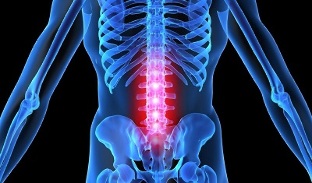
The lumbar spine is located between the sacrum and the thoracic region and consists of five vertebrae connected by intervertebral discs.
The development of osteochondrosis involves the wear of intervertebral discs, which have the role of absorbing shock during the load on the spine. The base of the discs is a gel-like mass, protected by a dense fibrous ring and cartilaginous tissue, and the inner space is filled with a liquid nucleus pulposus.
As the loads on the vertebrae increase, the elasticity and flexibility of the intervertebral discs are lost, as well as their height, and microcracks form in the annular fibrosus, which eventually leads to its rupture and damage to the pulpal nucleus.
Tissue destruction is accompanied by pinching of nerve roots located on both sides of the vertebrae and causes severe pain.
Main signs of lumbar osteochondrosis:
- back pain;
- fatigue and depression;
- weakness or excessive muscle tension;
- loss of sensation in limbs, buttocks or thighs;
- sharp or painful pains and cramps in the lumbar region, which often radiate to the legs;
- motor dysfunction.
In the background of serious lesions of the spine in the lumbar region, other symptoms are observed, most often dysfunctions of other organs - urinary and reproductive system, gastrointestinal tract.
Causes
Like most diseases of the musculoskeletal system, osteochondrosis can develop for many reasons. Some of them are rooted in lifestyle and diet, while the other part develops against the background of the physiological characteristics of the body.
Treatment of osteochondrosis of the lumbosacral spine is often necessary for athletes whose back is exposed not only to constant loads of force, but also to occasional injuries.
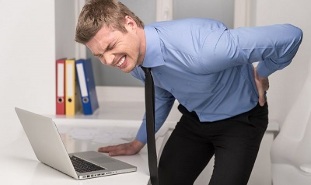
Another category of high-risk people, people who spend a lot of time in one position due to their profession - teachers, hairdressers, chefs, porters, waiters, programmers, office workers and drivers.
Among other reasons for the development of pathology:
- overweight;
- metabolic disorder;
- improper posture, bending;
- genetic predisposition;
- injuries;
- bad habits;
- lack of useful microelements and vitamins in the diet;
- abnormal development of the musculoskeletal system, flat feet;
- hypothermia;
- inactivity, static;
- frequent stress.
All of the above factors can affect the elasticity of the intervertebral discs, as they contribute to impaired blood flow or the appearance of nutrient deficiencies entering the spinal tissues.
Vertebrae are able to perform their functions, subject to regular tissue regeneration. In the case of any malnutrition of the spinal tissues, whether it is a lack of blood circulation or problems with metabolism, the regeneration processes slow down or stop completely. Thus, dehydration and dystrophic changes of the cartilage and fibrous ring of the vertebrae occur.
Degrees of osteochondrosis of the lumbar spine
Depending on the level of the spinal lesion, there are four stages of development of osteochondric processes, which are manifested in stages, as the disease progresses.
First degree
Pathological processes in the spine begin long before their first clinical manifestation. As a result of moisture loss, the intervertebral discs become less elastic. The height of the discs remains normal. The patient feels discomfort in the lumbar region.
Second degree
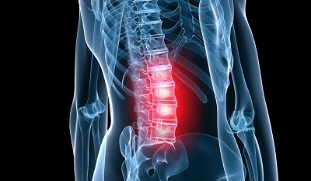
Against the background of lack of moisture, microcracks appear in the annular fibrosus and tissue inflammation develops.
Hook-shaped vertebral processes gradually increase. Seals develop in the cartilage.
The patient complains of back pain radiating to the legs or groin. Limitation of motor abilities is possible. Disorders in the work of internal organs appear.
Third degree
The integrity of the annular fiber is broken, the intervertebral disc protruding forming a hernia. The vessels and nerve endings are constricted. There are muscle cramps, dysfunction of the pelvic organs, sensory disorder of the lower extremities, long-term attacks of sciatica.
Fourth degree
The most difficult phase that is not treated during the disease. As a result of the complete destruction of the intervertebral discs, scars appear in their place. The vertebrae get as close as possible and gradually deform. With the development of spinal cord compression, paralysis of the lower extremities is possible.
If timely treatment of lumbar osteochondrosis is not provided, vertebral destruction will progress and may lead to disability.
Diagnostics
In order to recognize the disease and determine the correct diagnosis, neurologists use a number of measures - taking a history, physiological examination and studying the apparatus.
Taking medical history
Allows you to study patient complaints:
- cause for concern;
- place of discomfort;
- duration and intensity of unpleasant sensations;
- duration of illness;
- possible causes of the disease;
- frequency of deterioration;
- exacerbating factors;
- factors that improve well-being.
In addition, the physician studies information about the patient's lifestyle, diet, work, and rest, the presence of bad habits, hereditary factors, and trauma.
Physiological examination
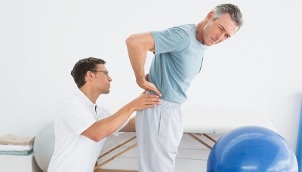
It is performed to identify pathological changes and make a preliminary diagnosis.
During the examination, the doctor assesses the patient's motor skills - gait, posture, amplitude and range of motion. The condition of the muscles is examined by palpation - tone, size, volume, presence of cramps.
Sets the sensitivity level with slight tingling. Knocking with a hammer enables the recognition of pain radiation zones.
Hardware Studies
To obtain complete and accurate information about the location of the pathology and the degree of tissue damage, doctors use research that uses different types of medical equipment.
Radiography.X-ray examination of the lumbar spine enables the determination of anatomical parameters of the vertebrae and intervertebral discs, the tendency of narrowing of the holes between the bases, the presence of bone growths.
Tomography.The use of electromagnetic waves gives an on-screen image of the area being studied for further study and analysis of the condition of the blood vessels that supply the tissues of the spine, nerve processes and intervertebral discs.
CT.X-rays of several segments of the spine were taken. The image is displayed on a monitor to determine the nature of the changes on the vessels, the membranes of the vertebrae and spinal cord, the marginal growths.
Different types of studies are used for differential diagnosis to exclude pathologies of other body systems.
Treatment of osteochondrosis of the lumbosacral spine
The duration and characteristics of treatment of lumbosacral osteochondrosis depend on the results of diagnostic measures. Conservative treatment is indicated in the early stages of the disease. Surgery is used for more complex spinal lesions.
Optimal therapeutic effect is achieved by complex therapy, which includes the use of local drugs, physiotherapy, massage, health gymnastics.
Medications
Non-steroidal drugs for internal and external use - tablets, injections, ointments - are prescribed to alleviate the symptoms. In addition, chondroprotectors, neuroprotectors, diuretics, vitamins, muscle relaxants are used.

The drug allows:
- eliminate pain;
- relieve inflammation;
- relax muscles;
- restore destroyed cartilage tissue;
- improve blood circulation;
- reduce swelling;
- increase physical activity;
- normalize brain nutrition.
For acute pain, novocaine blockade is used, which provides immediate effect.
Folk remedies
Traditional treatment is effective as an adjunct to drug therapy. The main methods of traditional medicine are based on the use of plant material, animal products and chemicals.
On the basis of various components, ointments and compresses, decoctions and infusions are prepared, which are used for internal and external use, as well as for therapeutic baths.
Physiotherapy of lumbar osteochondrosis
Physiotherapy procedures are an excellent way to restore motor functions of the spine after suffering from osteochondrosis.
The main physiotherapy methods are:
- electrotherapy- exposure to weak electric currents to improve blood circulation in tissues;
- magnetotherapy- use of magnetic field properties for tissue regeneration at the cellular level;
- laser therapy- complex activation of biological processes in vertebral tissues and nerve endings;
- shock wave therapy- improvement of microcirculation and metabolic processes in the affected tissues by the effect of acoustic wave;
- balneotherapy- using the healing properties of mineral water.
Physiotherapy procedures not only increase the effectiveness of drug treatment several times, but also contribute to healing and strengthening of the body as a whole.
Massage for osteochondrosis of the lumbar region
Attending massage treatments is one of the most comfortable and effective methods of treating osteochondrosis.
Massage therapy:
- eliminate muscle cramps;
- improve blood supply to affected areas;
- improve lymph flow;
- restores atrophied muscles;
- remove the mobility restriction.
Massage is prescribed when pain syndromes are eliminated.
Rehabilitation gymnastics
The main task of exercise in osteochondrosis is to restore the functionality of the spine and correct it. However, you can attend classes only after the symptoms of worsening have disappeared.
The most effective methods of medical gymnastics are:
- charging;
- visit to the gym;
- water therapy, swimming.
The hoop can be used for sports at home. Some doctors recommend yoga to their patients to restore spinal flexibility.
Exercises to worsen lumbar osteochondrosis
All exercises for osteochondrosis should be performed slowly and without sudden movements.
To strengthen the muscles that support the vertebrae, appropriate exercises are performed lying on your stomach. In this case, the arms are stretched slightly, but without tension. Repeat 4 times.
Surgery
Surgical treatment of the spine is used in particularly severe cases - in significant neurological disorders, as well as in loss of stool control.
During the operation, the source of the disease is removed and measures are taken to stabilize the spine. The postoperative period lasts several months.
Why is lumbar osteochondrosis dangerous?
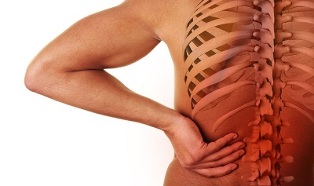
Degenerative changes that occur in lumbar osteochondrosis contribute to the development of many life-threatening diseases. Bumps, lumbago and sciatica appear on the background of the intervertebral hernia.
Further progression of the disease may cause intervertebral disc prolapse and spinoza formation. In addition to the severe pain that accompanies the pathology, a person's motor abilities are impaired, until complete loss. Paralysis of the lower extremities develops.
Death is inevitable in case of significant damage to the spinal mucosa.
Prevention
To avoid harmful changes in the spine, you must take care of a healthy lifestyle:
- do sports - swimming, tempering;
- adhere to a proper balanced, nutritious diet;
- eliminate bad habits;
- maintain posture;
- support your spine during sleep with an orthopedic mattress.
In addition, it is desirable to avoid hypothermia, lifting heavy loads. Women are advised not to wear heeled shoes often.
You can adjust your lifestyle to your lower back and not forget the importance of physical activity.





































